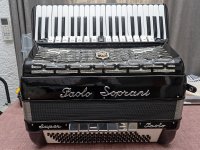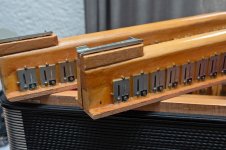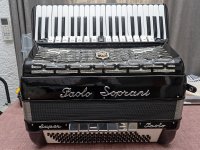
I just got this old Paolo Soprani in for repair (cracked corner) and tuning and I found that it does not have the piccolo reeds upside down and that appears to be original. It's a "Super Paolo" with convertor and with L and H reed banks in cassotto.
I wonder since when accordions started having the piccolo reeds mounted upside down. Maybe some of the "older" experts here might know?
The register style suggests this accordion may be from the sixties or seventies.

These are the reed blocks in cassotto: one side has the L reeds, the side you see has the H reeds.

